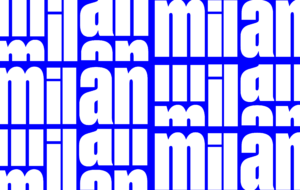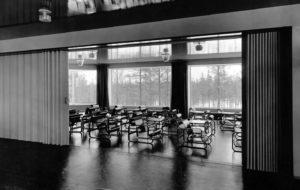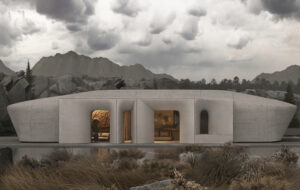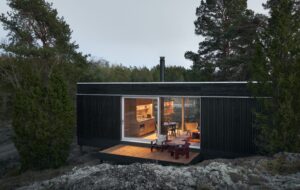|
|
||
|
From an Anglo-Saxon point of view, Sweden has always looked like a place where architecture and social democratic politics work in concert. British town planners and architects have been visiting the country for generations to see how things could be done. I once went on one of these trips, with a bunch of architects, housing association developers and policy people. We snooped around a huge new district of sustainable housing in Stockholm like small game hunters, while residents hung out the washing next to the babbling Sustainable Urban Drainage System. The background to this apparently enlightened idyll is examined in the book Swedish Modernism: Architecture, Consumption and the Welfare State, edited by two prominent figures in Stockholm’s theoretical landscape: architecture historian Helena Mattsson and philosopher Sven-Olov Wallenstein. They have brought together a series of essays examining the intertwined histories of Swedish social democracy and architectural modernism. It is mainly a historical book, a kind of recasting of the politics of the inter- and post-war periods informed by contemporary theoretical fashions. It is thus very good on the dynamics between politicians and architects, and how punters were implicated in the world imagined for them. The most interesting view of some of the authors in the book (particularly Mattsson) is that Swedish modernism, unlike other European variants, made a virtue early on of its continuity with tradition, rather than framing itself as a radical break. In the introduction, there is a fascinating drawing from the 1931 architectural manifesto Acceptera of the so-called Ornässtugan, a classic Swedish vernacular house, drawn as a funkishus, or functionalist building. Through drawings like this one, say the authors, “the most Swedish of everything – history in its truth – is already on its way toward functionalism, even though the lack of industrial technology impeded the ‘natural formation of types’ that was always there from reaching all the way to our modern standardisation”. This sentence is also a great example of Black Dog Publishing’s monumentally bad editing, but let’s not dwell on that. More succinctly put, the critical impetus for the modern movement in Sweden is an oscillation: “To move ahead is also to move backward to the true roots; to return to the authentic tradition is to move ahead.” The critiques of modernism that were developed in other countries in later phases of its development, Mattson argues, were in fact already integrated into the case made for modernist architecture at the beginning of the Swedish project. This theme is expanded in my favourite essay in the book, by Oslo-based professor Thordis Arrhenius, about the Skansen open air museum in Stockholm, a vast site in central Stockholm with rebuilt vernacular buildings, a zoo and so on. Arrhenius shows how an essentially anthropological and romantic project was a necessary counterweight to modernity not as escapism, but as equivalent. The reconstruction of vernacular homes, she argues, is “part of establishing a figure of thought that has had a fundamental impact on Swedish design evolution under socialist democracy, the notion of the vernacular as a model for modern life”. While the book doesn’t tackle contemporary problems in Swedish cities, it still seems like an urgent work, as it expresses so much that seems missing from the current debate. Swedish architecture today is more or less moribund, and the hegemony of the centre-right Moderate Party seems to have broken the social democratic consensus for good. Sweden can still build impressive things, but there is a feeling that an extreme conservatism, along with a consolidated construction industry (the dead hand of Skanska) and a moribund professional discourse, means that today its architecture is probably further away from its modernist roots than it ever has been. My only disappointment with Swedish Modernism (apart from the editing and the lack of an index), is that none of the essays go very far to describing in detail what the social democratic city (if there was such a thing) was like. It is too art historical for that, looking closely at the moments of modernism’s flowering in the ephemeral: expos, the manufacture of prefabricated houses, furniture and interiors. In all, this is an good attempt to talk about politics and architecture in the same breath, with scholarship that puts some “politicised” writing about cities in Britain right now to shame. Swedish Modernism: Architecture, Consumption and the Welfare State edited by Helena Mattson and Sven-Olov Wallenstein. Black Dog Publishing, £24.95.
|
Image Courtesy Collection of Arkitekturmusset Stockholm
Words Kieran Long |
|
|
||



















